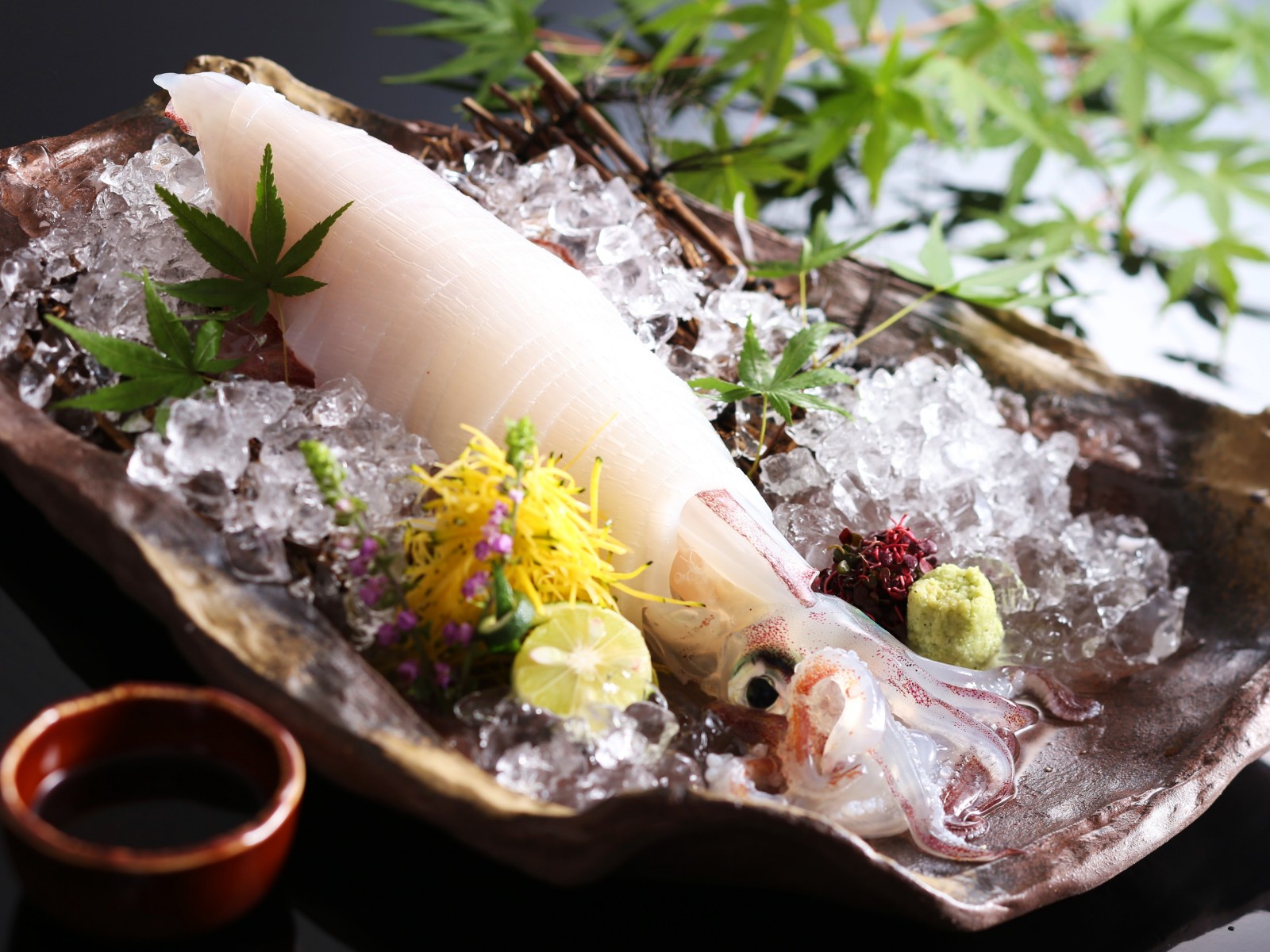Kai Kaga, a hot spring inn located in Yamashiro Onsen, will hold the “Kaga Autumn Leaves Ippuku Tea Ceremony,” where visitors can enjoy green tea and tea sweets in a tea room that is a tangible cultural property of Japan.
Gorgeous autumn leaves peeking out from a tea room associated with the gourmet chef Kitaoji Rosanjin

The garden, which can be seen from the tea room associated with Rosanjin, was created by craftsmen from Ueyakato Landscaping, who were responsible for the creation of Nanzenji Temple and other gardens in Kyoto, incorporating local elements from Ishikawa Prefecture.
Although small, the garden is designed to resemble a strolling path leading to a hermitage (tea house) in the mountains, with a well-balanced arrangement of 200-year-old cedar trees, lanterns, stone wash basins, water fountains, a central gate, maple leaves, and red pine trees that have remained since the days of Shiraginya, the predecessor to the Kai Kaga.
In particular, kotobashira lanterns modeled after the lanterns in Kenrokuen Garden and Kutani tiles inspired by Kaga Yuzen are placed in the courtyard, and the autumn leaves that scatter freely on the Kutani tiles, combined with the five Kutani colors, provide a gorgeous atmosphere while scattering.
A tea party that even first-timers can easily enjoy

Although tea ceremonies have a strong image of being attended in formal attire, the Kaga Momiji Ippuku Tea Ceremony can be casually attended in everyday clothes.
Matcha (powdered green tea) and tea sweets are served in a tea room on the premises, which has been designated a Tangible Cultural Property of Japan. Ishikawa Prefecture is considered one of Japan’s three best places for making Japanese confectionaries. This year’s event will offer seasonal wagashi such as autumnal Kamiyou-manju and Zenzai made at the long-established confectionery “Shimotsuune” in Yamashiro Onsen.
Familiarize yourself with Kutani-yaki, a traditional Kaga craft
Kaga is a famous city that prospered as Kaga Hyakumangoku during the Edo period (1603-1867) under the rule of the Maeda Toshiie family. Many literary figures visited the city, most notably the gourmand Kitaoji Rosanjin, who was fascinated by Kutani ware and Kaga cuisine, and who developed his own culinary philosophy and talent through his stays at Yamashiro Onsen.
Kutani ware tea bowls will be used at the Kaga Autumn Leaves Ippuku Tea Ceremony. We have prepared about 10 patterns of patterns associated with autumn. Kutani-yaki is known for its overglaze enameling with multiple colors. Our staff will introduce the profound brilliance of the Japanese paints applied in five colors (green, yellow, red, purple, and dark blue) on the bold and vigorous line drawings, as well as the unique painting style of each kiln.
Outline of "Kaga Autumn Leaves Ippuku Tea Ceremony
| Duration: |
November 1-30, 2022 |
| Time: |
15:00~17:00 |
| Price: |
1 pair 3,500 yen (tax included) |
| Capacity: |
1 group per day (1-4 people) |
| Includes: |
Rental use of tea room, Matcha experience |
>Click here for reservation












































